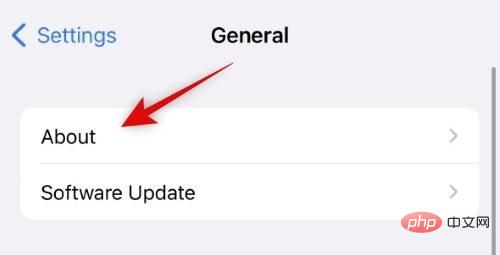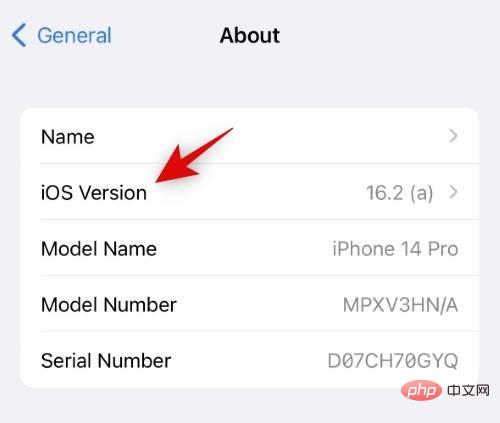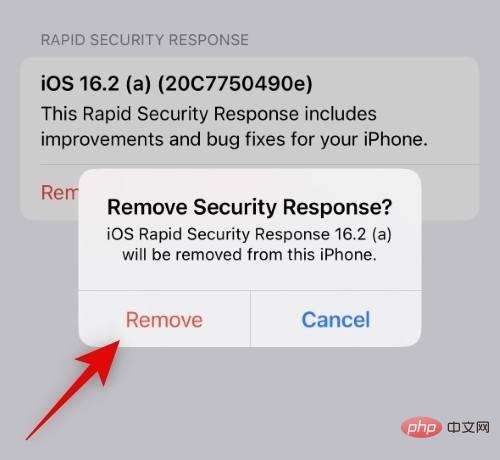How to uninstall iPhone security updates and find out why?
Apple is now slightly changing the way it updates iPhones and iPads by separating security updates from feature updates by releasing iOS 16 and iPadOS 16.1 separately. It appears to be a leaf in Microsoft's book that selective security response updates will help Apple ensure maximum security and stability of its devices without having to wait weeks for the release of upcoming features. However, as with every operating system update for any device, you may encounter bugs and issues that can hinder your workflow. Thankfully, like Windows, Apple allows you to uninstall security updates—called Rapid Security Response—if needed. Let’s find out how to remove and why or if you should uninstall them.
How to uninstall security updates (Rapid Security Responses) on iPhone
Before you can uninstall Rapid Security Responses from iPhone, you need to meet some requirements. Use the sections below to familiarize yourself with them.
Requires
- iOs 16.2 or later
As of this writing, iOS 16.2 is still in beta. If you'd like, you can sign up for Apple's beta program to get immediate access to this feature. However, let's say you plan to use the beta version in your daily driver. We don't recommend this in this case, as beta iOS builds often contain bugs that can cause instability in everyday drivers. In this case, we recommend you wait a few weeks for the public release of iOS 16.2.
Step-by-Step Tutorial
Here’s how to uninstall Rapid Security Responses from iPhone.
Open the Settings app and tap General.

Now click and select About.

Click and select iOS Version under Name.

#You will now see a list of installed security updates under Rapid Security Response. Find the relevant update you want to uninstall and click Remove Security Response.

Click Delete to confirm your choice.

When prompted, enter your iPhone’s passcode.

#You can now track the deletion process in real time with relevant updates. Once completed, your iPhone will restart and delete the selected Quick Security Response. Do not interrupt this process as it may take a few seconds for your iPhone to turn back on on its own.

#This is how you remove Quick Security Response from iPhone.
Why and when to uninstall Rapid Security Responses on your iPhone?
There are not many reasons to remove Rapid Security Responses from your iPhone. These updates are designed to patch exploits, bugs, and other security flaws that could put your iPhone at risk. But in some cases, if a newer update ends up introducing issues and bugs, then you may choose to temporarily uninstall the update until Apple releases a new update.
On the other hand, if you are a security researcher, application developer, or an avid jailbreaker, security response updates may hinder your workflow. In this case, you can also choose to remove Quick Security Response from iPhone.
The above is the detailed content of How to uninstall iPhone security updates and find out why?. For more information, please follow other related articles on the PHP Chinese website!

Hot AI Tools

Undresser.AI Undress
AI-powered app for creating realistic nude photos

AI Clothes Remover
Online AI tool for removing clothes from photos.

Undress AI Tool
Undress images for free

Clothoff.io
AI clothes remover

AI Hentai Generator
Generate AI Hentai for free.

Hot Article

Hot Tools

Notepad++7.3.1
Easy-to-use and free code editor

SublimeText3 Chinese version
Chinese version, very easy to use

Zend Studio 13.0.1
Powerful PHP integrated development environment

Dreamweaver CS6
Visual web development tools

SublimeText3 Mac version
God-level code editing software (SublimeText3)

Hot Topics
 iPhone 16 Pro and iPhone 16 Pro Max official with new cameras, A18 Pro SoC and larger screens
Sep 10, 2024 am 06:50 AM
iPhone 16 Pro and iPhone 16 Pro Max official with new cameras, A18 Pro SoC and larger screens
Sep 10, 2024 am 06:50 AM
Apple has finally lifted the covers off its new high-end iPhone models. The iPhone 16 Pro and iPhone 16 Pro Max now come with larger screens compared to their last-gen counterparts (6.3-in on the Pro, 6.9-in on Pro Max). They get an enhanced Apple A1
 iPhone parts Activation Lock spotted in iOS 18 RC — may be Apple\'s latest blow to right to repair sold under the guise of user protection
Sep 14, 2024 am 06:29 AM
iPhone parts Activation Lock spotted in iOS 18 RC — may be Apple\'s latest blow to right to repair sold under the guise of user protection
Sep 14, 2024 am 06:29 AM
Earlier this year, Apple announced that it would be expanding its Activation Lock feature to iPhone components. This effectively links individual iPhone components, like the battery, display, FaceID assembly, and camera hardware to an iCloud account,
 iPhone parts Activation Lock may be Apple\'s latest blow to right to repair sold under the guise of user protection
Sep 13, 2024 pm 06:17 PM
iPhone parts Activation Lock may be Apple\'s latest blow to right to repair sold under the guise of user protection
Sep 13, 2024 pm 06:17 PM
Earlier this year, Apple announced that it would be expanding its Activation Lock feature to iPhone components. This effectively links individual iPhone components, like the battery, display, FaceID assembly, and camera hardware to an iCloud account,
 Gate.io trading platform official app download and installation address
Feb 13, 2025 pm 07:33 PM
Gate.io trading platform official app download and installation address
Feb 13, 2025 pm 07:33 PM
This article details the steps to register and download the latest app on the official website of Gate.io. First, the registration process is introduced, including filling in the registration information, verifying the email/mobile phone number, and completing the registration. Secondly, it explains how to download the Gate.io App on iOS devices and Android devices. Finally, security tips are emphasized, such as verifying the authenticity of the official website, enabling two-step verification, and being alert to phishing risks to ensure the safety of user accounts and assets.
 LCD iPhone becomes history! Apple will be completely abandoned: the end of an era
Sep 03, 2024 pm 09:38 PM
LCD iPhone becomes history! Apple will be completely abandoned: the end of an era
Sep 03, 2024 pm 09:38 PM
According to media reports citing sources, Apple will completely abandon the use of LCD (liquid crystal display) screens in iPhones, and all iPhones sold next year and beyond will use OLED (organic light-emitting diode) displays. Apple first used OLED displays on iPhoneX in 2017. Since then, Apple has popularized OLED displays in mid-to-high-end models, but the iPhone SE series still uses LCD screens. However, iPhones with LCD screens are about to become history. People familiar with the matter said that Apple has begun ordering OLED displays from BOE and LG for the new generation iPhone SE. Samsung currently holds about half of the iPhone OLED display market, LG
 How to install and register an app for buying virtual coins?
Feb 21, 2025 pm 06:00 PM
How to install and register an app for buying virtual coins?
Feb 21, 2025 pm 06:00 PM
Abstract: This article aims to guide users on how to install and register a virtual currency trading application on Apple devices. Apple has strict regulations on virtual currency applications, so users need to take special steps to complete the installation process. This article will elaborate on the steps required, including downloading the application, creating an account, and verifying your identity. Following this article's guide, users can easily set up a virtual currency trading app on their Apple devices and start trading.
 Anbi app official download v2.96.2 latest version installation Anbi official Android version
Mar 04, 2025 pm 01:06 PM
Anbi app official download v2.96.2 latest version installation Anbi official Android version
Mar 04, 2025 pm 01:06 PM
Binance App official installation steps: Android needs to visit the official website to find the download link, choose the Android version to download and install; iOS search for "Binance" on the App Store. All should pay attention to the agreement through official channels.
 Download link of Ouyi iOS version installation package
Feb 21, 2025 pm 07:42 PM
Download link of Ouyi iOS version installation package
Feb 21, 2025 pm 07:42 PM
Ouyi is a world-leading cryptocurrency exchange with its official iOS app that provides users with a convenient and secure digital asset management experience. Users can download the Ouyi iOS version installation package for free through the download link provided in this article, and enjoy the following main functions: Convenient trading platform: Users can easily buy and sell hundreds of cryptocurrencies on the Ouyi iOS app, including Bitcoin and Ethereum. and Dogecoin. Safe and reliable storage: Ouyi adopts advanced security technology to provide users with safe and reliable digital asset storage. 2FA, biometric authentication and other security measures ensure that user assets are not infringed. Real-time market data: Ouyi iOS app provides real-time market data and charts, allowing users to grasp encryption at any time






